WA declared free from Queensland fruit fly
BY DEPARTMENT OF PRIMARY INDUSTRIES AND REGIONAL DEVELOPMENT

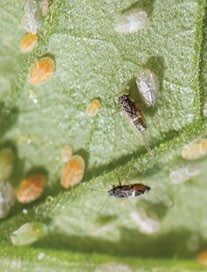
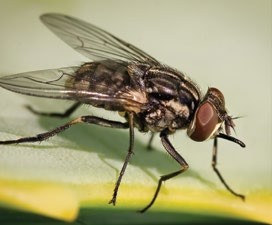

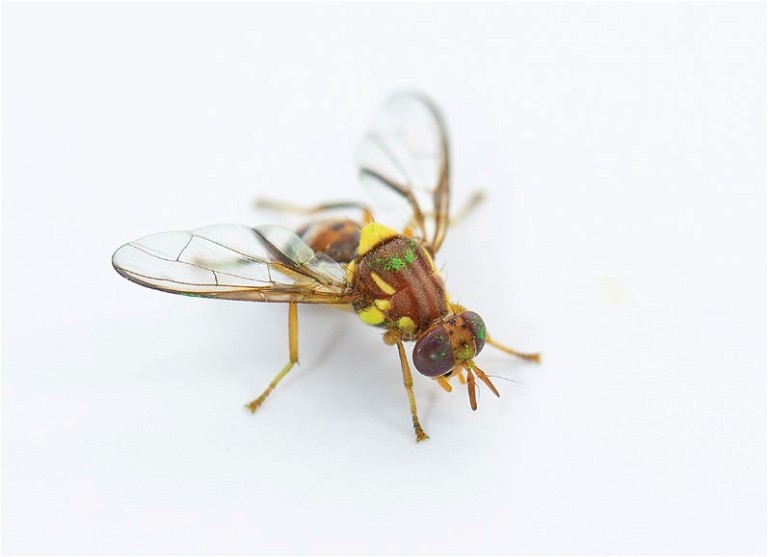
IN response to the Queensland fruit fly outbreaks the McGowan Government invested more than $13.5 million into the eradication efforts to protect the State’s $1 billion horticulture industries.
The DPIRD thanks growers for their co-operation with the control measures introduced.
Western Australia has been declared free of Queensland fruit fly (Qfly) after a successful 15-month campaign to eradicate the destructive pest from the Perth metropolitan area.
The Department of Primary Industries and Regional Development (DPIRD) thanks growers for their co-operation with the measures introduced to prevent the spread of Qfly.
In response to the outbreaks in Dalkeith and more recently Coolbellup, the McGowan Government invested more than $13.5 million into the eradication efforts to protect the State’s $1 billion horticulture industries and access to vital export markets.
A team of more than 550 DPIRD personnel worked closely with communities in and around Dalkeith and Coolbellup to carry out more than 173,000 property and baiting inspections.
At the height of the eradication effort, more than 200 response personnel were on the ground conducting inspection and control activities.
Impact on WA growers
Following the Coolbellup Qfly detection, a 15km Wider Quarantine Area was established — this encompassed Perth Markets in Canning Vale.
DPIRD’s chief plant biosecurity officer approved measures for commercially produced host fruit or plants moved from the wider quarantine area to other areas within WA. Anyone buying or selling Qfly host material at Perth Markets were required to follow these measures to reduce the risk of Qfly spreading.
Approved measures included using fly proof packaging such as netting, plastic wrap, plastic bags or cardboard boxes with holes no larger than 1.6mm. Alternatively, produce could be kept inside a building with closed doors, rapid lift doors, curtains or fly mesh. These restrictions have now been lifted.
Sterile Insect Technique
After conducting six weeks of baiting and surveillance in Coolbellup with no further detections, the Sterile Insect Technique (SIT) was used. A scientifically proven method of pest insect control, this technique uses the mass rearing, sterilisation, and release of Queensland fruit fly (Qfly) in targeted areas. Once released in the environment, the sterile Qfly mate with their wild counterparts, which disrupts reproduction and suppresses pest population numbers.
Qfly are bred in the state-of-the-art National Sterile Insect Facility SITPlus, located in Port Augusta, South Australia.

PUPAE are reared in special towers used to ensure successful, bulk emergence of the flies.
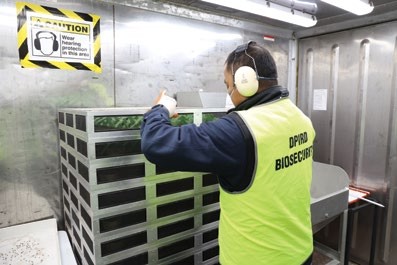
ENTOMOLOGIST Herojeet Singh checking sterile Qfly at DPIRD’s South Perth facility prior to release.

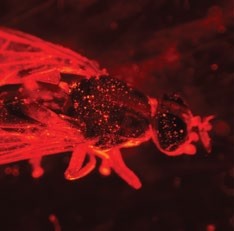
PUPAE are marked with a distinctive coloured dye.
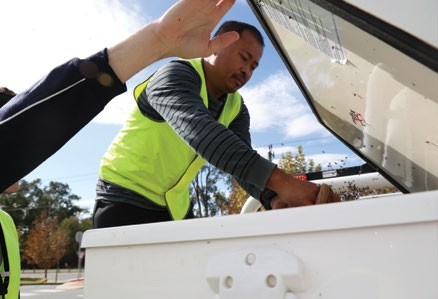
STERILE Qfly are loaded into a special release machine attached to a specially modified vehicle.
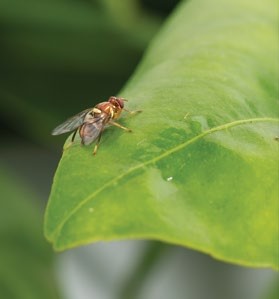
STERILE Qfly mate with their wild counterparts, resulting in infertile eggs.
Eggs are collected on a larval tray where the eggs hatch into larvae. After maturing into pupae, the pupae are marked with a distinctive coloured dye and sterilised using x-rays. The now sterile pupae are transported to entomologists at DPIRD’s South Perth facility and placed in emergence containers.
Qfly were released weekly in the outbreak area at the rate of 3,000 flies per hectare.
As the flies emerge from their pupal case, traces of the coloured dye stick to their bodies in a unique pattern. This is what makes them distinguishable from the wild flies once caught and microscopically examined. The sterile ‘dye-marked’ adults are released at five days old.
Sterile ‘dye-marked’ adult Qfly are loaded into a special release machine fitted to a specially modified vehicle. Travelling along a pre-determined route, sterile Qfly were released weekly in the outbreak area at the rate of 3,000 flies per hectare.
DPIRD’s permanent grid of surveillance traps as well as supplementary traps are then used to monitor the population of sterile Qfly and to detect any wild Qfly.
Both the Dalkeith and Coolbellup responses have been successful in raising public awareness of Qfly. As a result of this awareness, reports of SIT Qfly are received on a regular basis from the general public.

STERILE Qfly are then released along a pre-determine route.
Next steps
After completing treatments, including six weeks of Sterile Qfly releases and no further detections of wild Qfly, eradication was declared. Restrictions for the movement and management of fruit in the Perth metropolitan area have now been removed.
DPIRD, with the help of the community, has successfully eradicated previous Qfly outbreaks in Perth on seven occasions since the late 1980s.
The Department will continue to maintain a permanent grid of more than 2,000 Lynfield Qfly lure traps. These traps are distributed throughout the Perth metropolitan area, Albany, Bunbury/Busselton, Gingin, Manjimup and in the Ord River Irrigation Area at Kununurra. Acting as an early warning system, the grid alerts DPIRD to Qfly incursions within WA.
In May, DPIRD staff took part in the three-day National Fruit Fly Symposium. The symposium is designed to progress discussion on critical fruit fly issues and will seek to identify priorities for building future national success.
Biosecurity and reporting
The successful management of Qfly requires a coordinated approach from government, growers, producers and the community — everyone has a part to play. Pest pressure in WA is growing and prevention is always better than cure. We encourage industry to constantly review their produce hygiene, Qfly host plant maintenance and farm biosecurity. By working together, we can reduce pest pressure and increase market opportunities.
Early detection is the best protection against serious horticultural pests such as Qfly.
Maintaining Qfly Area Freedom provides WA growers access to export markets, such as avocados to Japan and strawberries to Thailand.
Early detection is the best protection against serious horticultural pests such as Qfly. Producers and the wider community play a critical role in protecting WA’s biosecurity. Stay vigilant for signs of Qfly, sightings of unusual insects or damage to plants. Working together to report suspect fruit fly in your area will strengthen local industries and support your community.
MORE INFORMATION
Report biosecurity concerns to DPIRD’s Pest and Disease Information Service on (08) 9368 3080 or email padis@dpird.wa.gov.au. Alternatively, they can send photos via DPIRD’s MyPestGuide™ Reporter app (Google Play Store and Apple iTunes Store), or email padis@dpird.wa.gov.au.